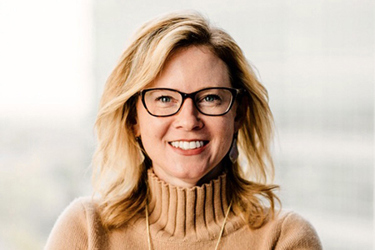For Hybrid Trials, Have Some Faith … In Sites

By Dan Schell, Chief Editor, Clinical Leader

EDITOR'S NOTE: In July 2024, Gaskill accepted a new position as VP, GM Tempus TIME Network at Tempus AI.
Noelle Gaskill remembers that call with the FDA. It was 2023, and the agency’s officials were explaining the new FDA DCT Guidance. Gaskill, head of clinical research collaborations at Mirati Therapeutics (acquired by BMS in January 2024), was listening in with the company’s head of regulatory affairs. They had been working for months on designing a hybrid DCT interventional, Phase 2, oncology trial that involved two site networks: a private practice network and a government-run organization. “At one point, one of us said, ‘OK, we can’t do this.’ It really came down to that virtual attendance of the PI issue.”
But her opinion eventually changed, and the trial design did get FDA approval. What happened in-between that initial FDA call and the approval is what she recently discussed in her ACRP presentation Building Sponsor Confidence in Sites' Abilities to Run DCTs and in her interview with me.
ASK THE SITE HOW THEY WOULD DO IT
Simply put, Gaskill believes that, as an industry, we may be approaching some DCTs the wrong way. Typically, a sponsor dictates to a site that a trial has to be a DCT, and the site needs to use the sponsor’s technology suite. In Gaskill’s learning, it was more about trusting the site. “I actually asked them, ‘Do you want to do this trial as a DCT? And if so, how would you do it?’”
Noelle Gaskill describes the three barriers that this hybrid trial approach overcomes.
She notes that this was really a hybrid trial, so not totally remote. And the success of the model really depends upon the site networks’ comfort level with not only the hybrid approach but their geography and existing technology. The latter is where a lot of the questions typically arise. For instance, sponsors have a “playbook” that details how they will execute a trial with their existing technology while also maintaining patient safety and meeting regulatory guidelines. Gaskill says site networks often have this same style of playbook for their operating procedures. It would include, among other things, how they distribute IP amongst sites and with what vendor, how they assess drug accountability, and their SOPs for data entry and SAE management. “Of course, we as the sponsor need to review their playbook, do our due diligence, and feel comfortable with it. But we don't need to orchestrate it. This is what they do — execute on trials.” She adds that the site networks that agree to these hybrid trials already have things like e-consent, tele-health, EHRs, and TMFs. They already have ways to remotely watch patients, place orders, and review data. “They don't need pharma to come in with an entirely new suite of technology.”
OVERCOMING 3 COMMON BARRIERS
DCTs or hybrid trials often come with three common challenges: tech adoption, cost, and accessing patients where there isn’t a PI or research staff physically located. Gaskill says the trial Mirati designed overcame these barriers. The sponsor didn’t need to purchase a whole technology suite just for one trial, and the sites didn’t have to invest in any new technology or worry about any extra time learning a new system. The patient-access barrier was overcome thanks to the sites’ existing tech such as telehealth and EHRs, which allow the PIs to virtually manage the patients in the trial.
“These are the oncologist’s patients,” Gaskill explains. “What’s unique is that they are being treated with investigational products that still have some data elements we want to collect for toxicity management and for other reasons. So that comes down to a physical exam conducted by someone who understands and has been trained on the IP and the clinical trial to manage potentially drug related toxicities.” The FDA did focus on that point and wanted to make sure Mirati had the physician and the PI both present — even virtually — for the physical exam. Gaskill says the support from the PIs in this trial was paramount to receiving regulatory approval.
She cautions, though, that not every trial, especially those outside of oncology, will be a fit for this method. You need to be able to leverage larger healthcare organizations or site networks that have the needed technology infrastructure. “What I learned from this experience is that if you can acclimate to how one network/healthcare organization is comfortable executing a trial, you can take that info to the FDA and land on a model that works.”
